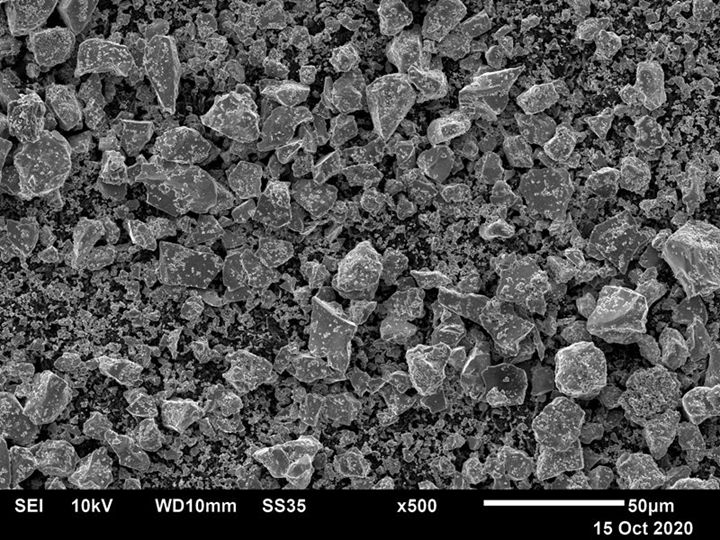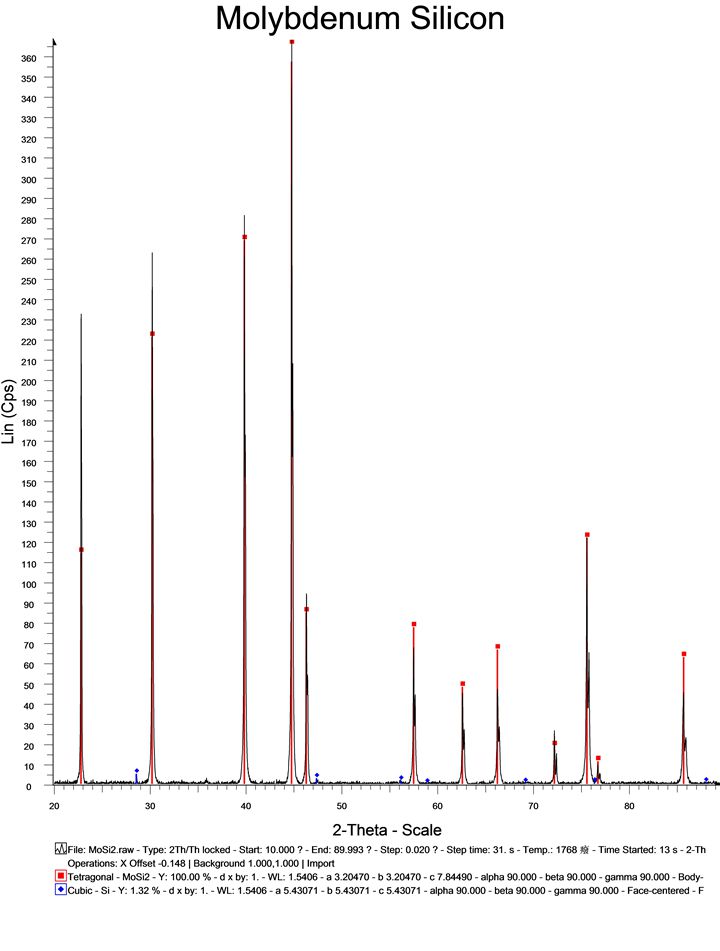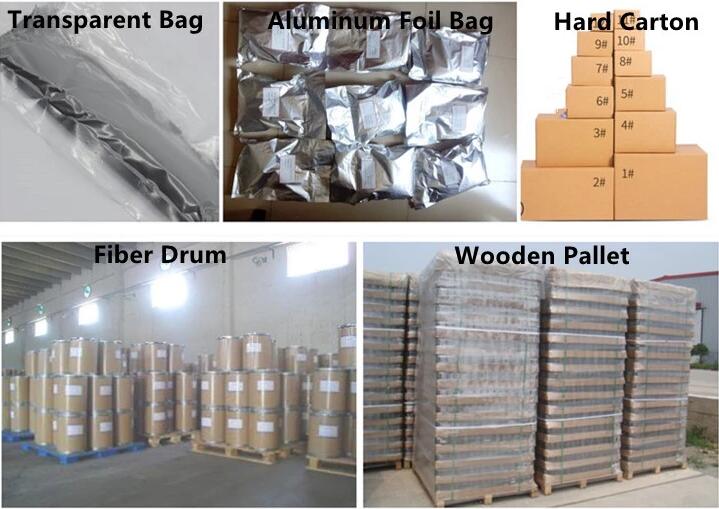- Home
- Products
- Elementary
- Boride Powder
- 3D Printing Powder
- Sulfide Powder
- Oxide Powder
- Carbide powder
- Nitride Powder
- Silicide Powder
- Hydride Powder
- Telluride Powder
- Selenide Powder
- Stearic Acid Series
- Phosphide Powder
- Nanoparticles
- Metal Alloy
- MAX Phase
- Lithium Battery Anode
- Surfactant
- Molecular sieves
- Concrete Admixtures
- News
- Answers
- Contact
- About
News
- 0
- 0
High Purity Molybdenum Silicide MoSi2 Powder CAS 12136-78-6, 99.5%
If you are looking for high-quality products, please feel free to contact us and send an inquiry, email: brad@ihpa.net
Recently, the EU proclaimed new sanctions on Russia, including coal, timber, rubber, cement, and fertilizer, as well as high-end seafood MoSi2 Powder.
About Molybdenum Silicide MoSi2 Powder:
MoSi2 is an intermetallic compound, molybdenum silicide is a refractory ceramic, mainly used for heating elements. It has a medium-density, a melting point of 2030 ° C, which is electrically conductive. At high temperatures, it forms a passivation layer of silica to protect it from further oxidation. The thermal stability of MoSi2 and the thermal stability of its high radiation make such materials and high radiation coatings in thermal shields from the atmosphere as they are used next to WSI2. MoSi2 is a material with a four-square crystal structure (α-modified) gray metal; its β-modification is hexagonal and unstable. It is insoluble in most acids but is dissolved in nitric acid and hydrofluoric acid.
Although MoSi2 has excellent oxidation and high Young's modulus at temperatures above 1000 ° C, it is brittle at lower temperatures. Moreover, at 1200 ° C or more, it will lose creep resistance. These properties are limited to their structural materials but can be shifted by using it as a composite with another material.
Molybdenum disilicide (MoSi2) is a promising candidate material for high-temperature structural applications. It is a high melting point (2030 C) material with excellent oxidation resistance and a moderate density (6.24 g/cm3). However, low toughness at low temperatures and high creep rates at elevated temperatures have hindered its commercialization in structural applications. Much effort has been invested in MoSi2 composites as alternatives to pure molybdenum disilicide for oxidizing and aggressive environments. Molybdenum disilicide-based heating elements have been used extensively in high-temperature furnaces. The low electrical resistance of silicides in combination with high thermal stability, electron-migration resistance, and excellent diffusion-barrier characteristics is important for microelectronic applications. Feel free to send an inquiry to get the latest price if you would like to buy Molybdenum Silicide MoSi2 Powder in bulk.
Characteristics of Molybdenum Silicide MoSi2 Powder:
Molybdenum silicide MoSi2 powder (CAS 12136-78-6) has high melting point, high corrosion resistance, high oxidation resistance, good electrical conductivity, high temperature ductility, a binary alloy system the intermediate phase, dual characteristics of metals and ceramics.
Technical Parameter of Molybdenum Silicide MoSi2 Powder:
| Product Name | MF | Purity | Particle Size | Melting Point | Density | Color |
| molybdenum silicide | MoSi2 | 99% | 5-10um | 2030℃ | 6.24g/cm3 | dark gray |
Chemical Composition of Molybdenum Silicide MoSi2 Powder:
| MoSi2 | Mo | Si | C | S | Fe | S | Ni |
| >99% | >60% | balance | 0.2% | 0.02% | 0.19% | 0.015% | 0.05% |
How is Molybdenum Silicide MoSi2 Powder produced?
Molybdenum disilicide and MoSi2-based materials are usually made by sintering. Plasma spraying can be used to produce dense monoliths and composite forms. The material produced by this method may contain a certain proportion of β-MoSi2 due to its rapid cooling.
Applications of Molybdenum Silicide MoSi2 Powder:
Molybdenum disilicide heating elements can be used for temperatures up to 1800 ° C, in electric furnaces used in laboratory and production environment in the production of glass, steel, electronics, ceramics, and in heat treatment of materials. Molybdenum disilicide is used in microelectronics as A Contact Material.
Heating element
MoSi2 is a conductive silicide that has an oxidation property due to a stable silica layer on its surface at a high temperature.
Although the top MoSi2 element can operate at temperatures up to 1800 ° C, the material is very brittle, which may suffer serious creep during use. However, they have process advantages because they can work under high electrical loads without aging, and will not exhibit increased resistivity during use. They have antioxidant properties in air, oxygen and oxygen-rich atmosphere.
Moreover, they can be used with ammonia, nitrogen, hydrogen, a rare gas, and limited vacuum, but due to the failure of the protective oxide layer, the operating temperature and life can be reduced.
MoSi2 elements are ready-made elements and can be made into a bending or straight form of a variety of sizes. These elements are mainly used in production furnaces and laboratory furnaces in ceramics, glass, steel, electronics and heat treatment industries.
High-temperature structure
Amazingness and high-temperature elasticity make MoSi2 a very promising material for high-temperature applications such as gas turbine engines. Many researchers strive to improve high temperature creep resistance and low-temperature ductility. However, there are no commercially available composites with all preferred features.
SEM of Molybdenum Silicide MoSi2 Powder:
XRD of Molybdenum Silicide MoSi2 Powder:
Packing & Shipping of Molybdenum Silicide MoSi2 Powder :
We have many different kinds of packing which depends on the molybdenum silicide MoSi2 powder quantity.
Molybdenum silicide MoSi2 powder packing: vacuum packing, 100g, 500g or 1kg/bag, 25kg/barrel, or as your request.
Molybdenum silicide MoSi2 powder shipping: could be shipped out by sea , by air, by express as soon as possible once payment receipt.
Luoyang Tongrun Nano Technology Co. Ltd. (TRUNNANO) is a trusted global chemical material supplier & manufacturer with over 12-year-experience in providing super high-quality chemicals and Nanomaterials, including boride powder, nitride powder, graphite powder, sulfide powder, 3D printing powder, etc.
If you are looking for high-quality MoSi2 powder, please feel free to contact us and send an inquiry. ([email protected])
Molybdenum Silicide Properties |
|
| Other Names | molybdenum disilicide, MoSi2 powder |
| CAS No. | 12136-78-6 |
| Compound Formula | MoSi2 |
| Molecular Weight | 152.11 |
| Appearance | Gray to Black Powder |
| Melting Point | 1900-2050 °C |
| Boiling Point | N/A |
| Density | 6.23-6.31 g/cm3 |
| Solubility in H2O | N/A |
| Electrical Resistivity | 0.0000270 - 0.0000370 ohm-cm |
| Specific Heat | 0.437 J/g-°C (23 °C) |
| Tensile Strength | 185 MPa (Ultimate) |
| Thermal Conductivity | 66.2 W/m-K (23 °C) |
| Thermal Expansion | N/A |
| Vickers Hardness | 900-1200 |
| Young's Modulus | N/A |
| Exact Mass | 153.859261 |
Molybdenum Silicide Health & Safety Information |
|
| Signal Word | Warning |
| Hazard Statements | H302-H312-H332 |
| Hazard Codes | Xn |
| Risk Codes | 20/21/22 |
| Safety Statements | 36 |
| RTECS Number | N/A |
| Transport Information | N/A |
| WGK Germany | 3 |
Due to the limited total amount of traditional energy, people have a huge demand for cleaner and greener new energy alternatives. Now, the emergence of graphene is unlocking the possibility of its application in the energy field, which can create a greener, more efficient, and sustainable future. Here Francesco Bonaccorso, Deputy Director of Innovation at the Graphene Flagship Program, explains how his researchers have developed a series of initiatives to bring graphene from the lab to the commercial market. Graphene has become a research hotspot for new materials in the 21st century. Graphene has been adopted by many industries, the most notable of which are healthcare and key material applications.
The development of graphene has brought huge fluctuations in the demand for MoSi2 Powder, and the demand for MoSi2 Powder will continue to grow in the future. You can contact us for the latest news on MoSi2 Powder.
Inquiry us
PREVIOUS NEWS